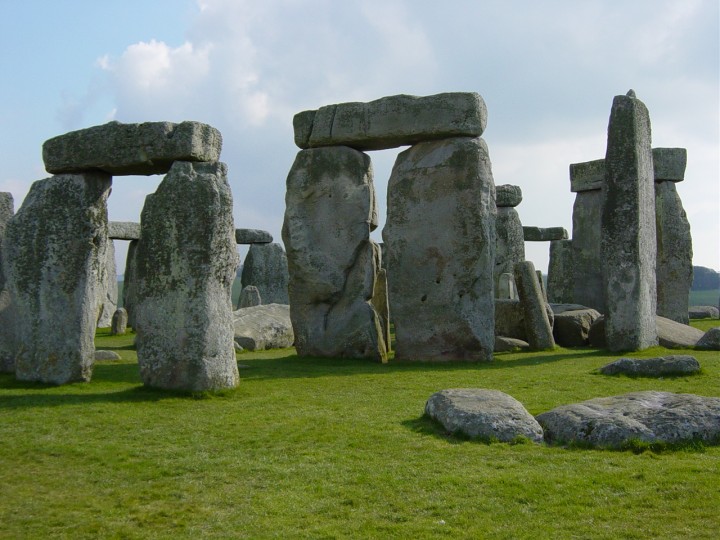Stonehenge is a rather curious structure in Wiltshire, England. While there still are some speculations about the purpose of it, now scientists are very interested in everyday life of those who built it.

Stonehenge is a rather mysterious structure and up to this day there is some speculation about the purpose of it. However, now scientists know what builders of it ate - boiled and barbequed pork and beef dominated their diet, while diary had ritual significance. Image credit: Daveahern~commonswiki via Wikimedia, Public Domain
Now researchers from a consortium of universities including the University College London analysed the food residues as well as the animal bones and other food waste from the large settlement of Durrington Walls near Stonehenge. This allowed scientists to take a look at what people ate while building Stonehenge.
Rather unsurprisingly, the primary foods were pork and beef were the prime foods, prepared in two traditional ways - barbecued and boiled. Archaeologists at the University of York investigated food residues preserved in the pots of the builders of the Stonehenge performing chemical analysis. It showed that boiled pork and beef were eaten in the houses. Meanwhile, scientists at Sheffield University researched animal bones and found that pork and beef were also barbecued in large, open-air feasts. Pots, unearthed in the settlement, allowed scientists to find out that milk was also consumed.
Analysis showed that curds-and-whey or cottage cheese was eaten in everyday life of the people in the settlement, but dairy also was more frequent than other foods in the ceremonial monuments. This shows that dairy products were considered to be special, maybe even served as a marker of social status or as a symbol of purity and ritual significance during public ceremonies.
Surprisingly, scientists did not manage to find many evidences that people consumed vegetables or cereals. During the analysis of the pots, researchers did not find any evidence demonstrating that pots were used to for cooking greens or other vegetables. However, although not much, scientists did find some evidences of crab apples, berries, hazelnut shells and other wild fruits existing in the diet of the Stonehenge builders. Archaeologists found burnt remains of these goods and it is pretty much all that survive of this 'meat fest' diet. And it looks like these people ate meat with passion.
Scientists discovered that domestic animals were killed and eaten in huge numbers, particularly pigs. And since analysis of the bones showed that many pigs were killed before reaching their maximum weight, scientists say that planned autumn and winter slaughtering and feasting-like consumption existed in these communities. Cooking was rather a primitive action. Most used methods appear to be boiling and roasting in pots probably around indoor hearths. Burnt patterns in animal bones suggest that there was also larger barbeque-style roasting held outdoors.
Scientists also found complete skeletons of animals, which can be traced to different parts of Britain. This means that animals got to the settlement alive, rather than just in the form of meat. This feasting now being investigated by the scientists does not really fit with the suggested notion about the slave-based society where labour was forced and coerced. Instead, such long trail of livestock required orchestration of a large number of volunteers likely drawn from far and wide.
Professor Mike Parker Pearson, who led the excavations at Durrington Walls, said: "This new research has given us a fantastic insight into the organisation of large-scale feasting among the people who built Stonehenge. Animals were brought from all over Britain to be barbecued and cooked in open-air mass gatherings and also to be eaten in more privately organized meals within the many houses at Durrington Walls". He also noted that ritual significance of milk means it might have been used to promoted unity between scattered farming communities.
This research revealed that there was a greater degree of culinary organisation than was expected for this period. Now scientists have a better understanding of what people who built Stonehenge ate and how they organized the food preparation. It is very interesting to know more about everyday life of people who create a structure, which for centuries was one of the greatest mysteries.
Story Source:
The above story is reprinted with permission of Technology.